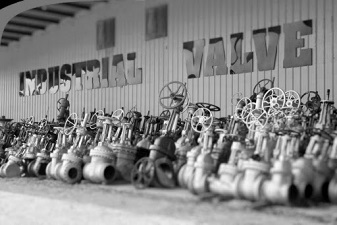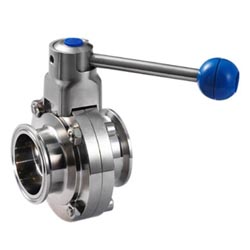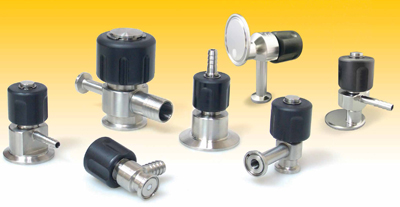The Difference Between Sanitary Valves and Ordinary Valves

What is the Difference Between Sanitary Valves & Ordinary Valves?
The most significant difference between sanitary valves and ordinary valves is that sanitary valves are designed for applications requiring clean or sterile processing. Sanitary valves are commonly used in dairy, food, pharmaceutical, medical, and chemical applications. Standard features include easy cleaning, crevice-free, and polished contact surfaces. Ordinary valves are linear motion valves and are generally used to start, stop, and regulate fluid flow in applications that do not require “food-grade” cleanliness.
Sanitary Valves VS Industrial Valves
Sanitary Valves Vs. Industrial Valves
Strictly speaking, the manufacturing standards for sanitary valves are very high. They are mainly developed for bio-fermentation companies and have very high requirements for the smoothness of the valve runner. Each part of a sanitary valve that will contact fluid must be made of stainless steel—usually 304SS or 316 stainless steel. Such material is non-toxic and non-hazardous, with a clean and smooth surface that doesn’t produce corrosion and shedding. With special treatment after manufacturing and processing, sanitary valves are made with superior quality to industrial valves in many ways, such as cleanliness and simple installation. They’re widely used in food, medical and other industries.

Sanitary Valves Characteristics
What is an Industrial Valve?
The unique features of each industrial valve are determined by the demands of its specific application. Industrial valves are primarily used in high-temperature and high-pressure working environments because they offer extreme durability and flexible operation. They’re widely applied in industries like machinery, metallurgy, petrochemicals, and urban construction. Although the exterior and interior of industrial valves are not as smooth and sterile as those of sanitary valves, industrial valves are vital in many different applications.
What is a Sanitary Valve?
All sanitary valves need to be disinfected to meet certain health criteria. Non-sanitary valve manufacturers cannot produce such valves because all toxic components must be eliminated (such as lead), which can cause poisoning, cancer, or even death. That’s why most sanitary valves are built exclusively with stainless steel material.
Another key feature of sanitary valves is that they must be free from crevices, cavities, and sharp corners where bacteria and other foreign matter can accumulate. They also require compatibility with easy cleaning-in-place (CIP) procedures.
There are many different types of sanitary valves, including sanitary stainless steel ball valves, sanitary butterfly valves, sanitary plug valves, sanitary rotary valves, and many more. Each type of sanitary valve serves its own purpose within industrial fluid systems. But they all share a common characteristic—they’re built with completely sterile and contaminant-free components to maintain the health and purity of the product that flows through them.
Conclusion: Sanitary Valves Vs. Ordinary Valves
Sanitary valves are used in highly hygienic environments such as pharmaceuticals, food, and daily commodities. Ordinary valves bring precise control to industrial fluid transmission systems, providing diversion, medium, regulation, anti-backflow, shunt, and pressure relief functions. There are already many different types of valves in use across the vast industrial world. With the continuous performance improvements of various technical equipment, more and more valve variations are necessitated every year.





